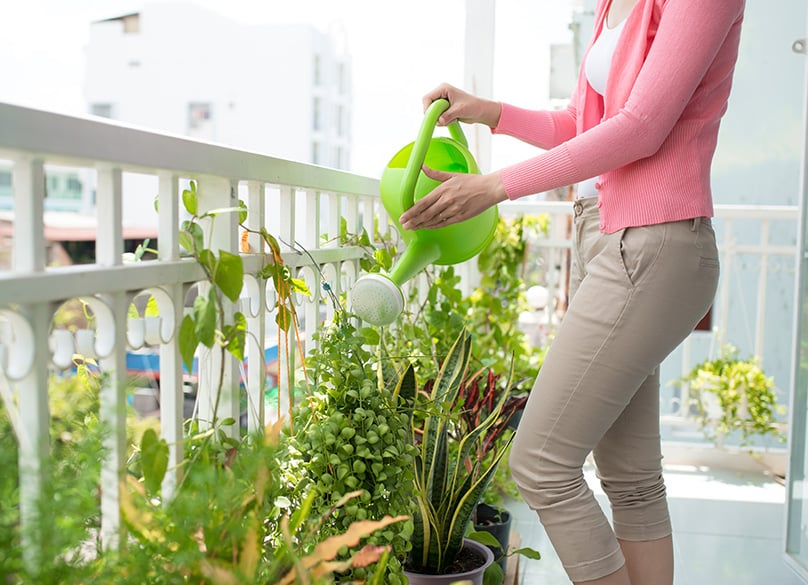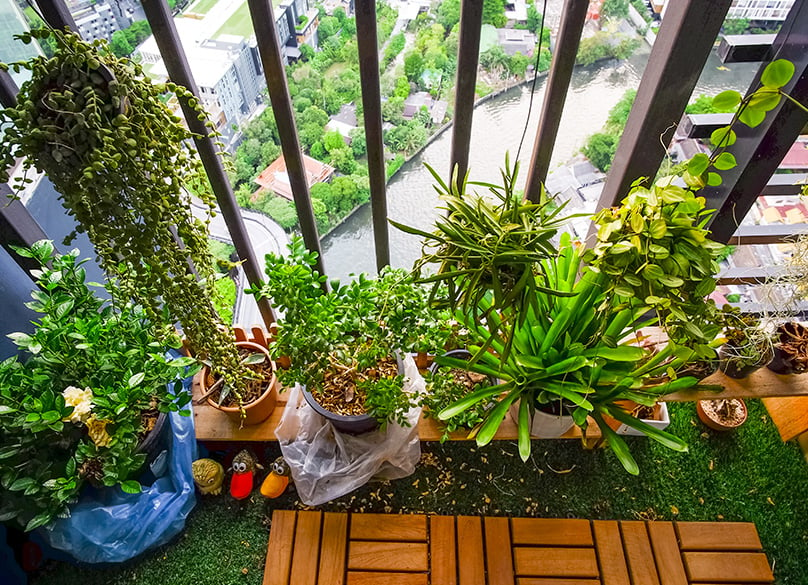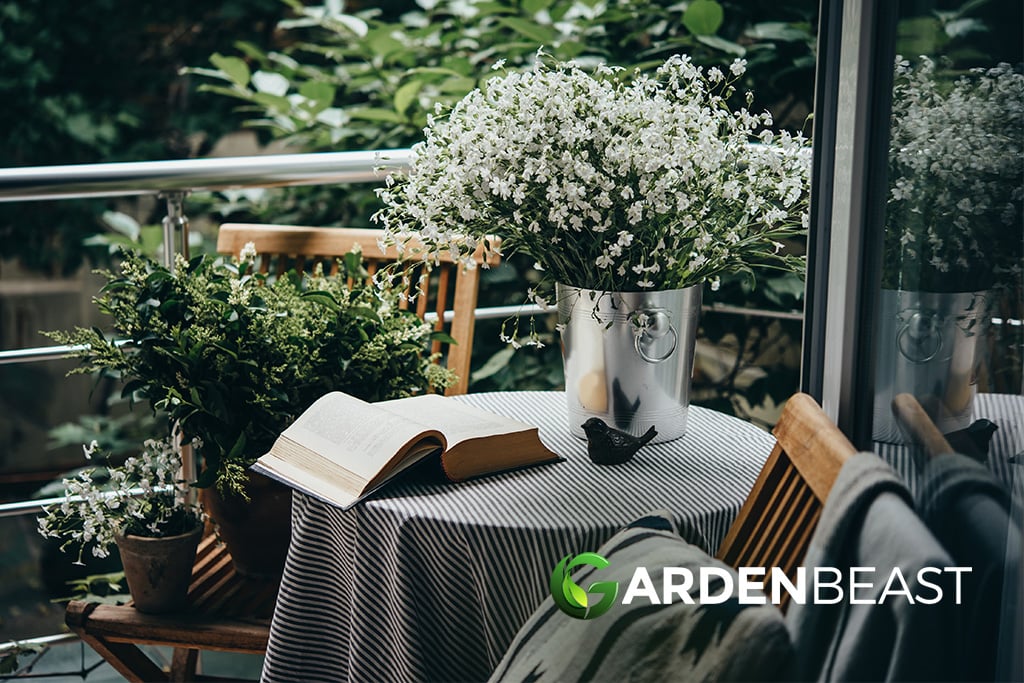Balconies do not have to be desolate, windswept spaces ignored by you and your visitors.
They can be places of beauty and delight, the perfect spot for an oasis of nature in the sky. Science has proven the restorative effects of nature, reports Scientific American, and just because you live in the sky does not mean you should have to go without.
With a few containers and a little creativity, you too can sit ensconced in cozy green comfort.
Knowing the Rules
When planning a balcony garden, it’s good to know the what you can get away with in your building. It’s no fun to plant a beautiful garden only to have to rip it up again after breaking an unknown rule.
Check your rental or condo agreement for rules, and if there are none listed, ask your landlord, superintendent, or condo board if there are any prohibitions.
Building rules commonly prohibit greenery hanging over balcony edges and vines crawling up walls. Additionally, they may have weight and size restrictions on plants. Even if the rules are stringent, strategic placement of small planters can still create amazing spaces.

Smaller buildings often do not have preset rules. This can allow more freedom in your planting, but be careful not to disturb or encroach on other people’s spaces. They might complain, forcing the building to create rules.
Framing the Space
Though the potential of small gardens is often ignored in North America, Europeans have long taken advantage of their balconies and other small spaces for beautiful, intricately designed gardens.
European balconies are dotted with plants and seating, and the European tradition of small gardens goes all the way back to the small medieval herb gardens found high in castle towers.
Decide how much space you’d like preserved for a seating area of tables, benches, or chairs. This should be your garden’s focal point, framed with larger plants at the sides, ensconcing your seating area in green comfort.

It’s good to place this open area in front of windows to preserve your inside view.
Around your seating area, place low plants closer in, with larger plants around the sides. This gives a feeling of being surrounded by nature, hiding the sharp balcony edges with organic growth.
Keep the planters and containers simple. Strong plastic containers are hardy and light, even if they don’t look like much. Let the plants create your beauty, not your containers.
For some extra cozy brilliance, use string lights to illuminate the space at night. Their ethereal glow flows through the leaves in dappled patterns, creating an atmosphere of European romance and comfort.
Exposure
What will grow well on your balcony depends on your climate zone and the balcony’s exposure. Balconies with southern and western exposures get the hottest sun of the day, requiring plants that love sun and can handle drier soil.
Balconies with northern exposures get little to no sun, requiring shade-loving plants. Eastern exposures are the easiest to deal with, providing lots of sun, but without the drying effects of hot afternoons.
Wind is also a major factor to consider on balconies, especially on balconies above eight stories. Only the hardiest of plants can survive on windswept balconies.
For high-rise balconies, pick plants that can survive colder climate zones, approximating high-rise conditions.

Mix and Match
New gardeners often don’t realize that they can plant multiple plants in the same pot or container, but this is the trick that truly takes container gardens from blah to amazing.
Just as florists combine multiple plants in bouquets and medieval herb gardens crammed all sorts of ground covers and vines into confined castle spaces, it is variety that creates an organic, natural appearance.
Using just two different plants in a container can create a much more interesting space, such as using one low-lying coverage plant and one high sprouting flower or vine.
The coverage plant will ramble over the edges of the container while the high flowers spread into the sky. Hardy perennials, such as gypsophila, false spirea, and creeping jenny, are easy to manage and make a great start.

Trellises and Trees
Trellises and trees are a great way to bring greenery high into your balcony space. Without them, balcony gardens feel low and barren. Dense trees also help break the wind, protecting less-hardy plants.
Not all buildings allow trellises, but if they do, securely fasten them to railings and supports with nylon rope or zip ties. Twine can also be used temporarily, but it will eventually fray and rot.
Trellises are great for covering large areas in green without taking up much space, using plants like honeysuckle and climbing hydrangea.

Conifers, such as pine, cedar, and fir handle the wind and dry solid of balcony gardens well. Kentia palms also work well on less windswept balconies and offer denser protection and shade than most conifers.
Plant trees in containers at least 22 inches deep and wide to allow room for healthy root systems.
Conclusion
Your balcony does not have to be a desolate afterthought tacked on to your home. It can be a green oasis in the sky, with the romance of Europe framing your city view. With a little bit of work and creativity, nature will be just steps away, letting your mind rest and regenerate in cozy green comfort.
References:
- Harris, Marjorie. Thrifty Gardening from the Ground Up. Toronto: House of Anansi Press, 2012.
- Jabr, Ferris. “Why Your Brain Needs More Downtime.” 15 October 2013. Scientific American. <scientificamerican.com/article/mental-downtime/>.
- Landsberg, Sylvia. The Medieval Garden. New York: Thames and Hudson, 1996.
